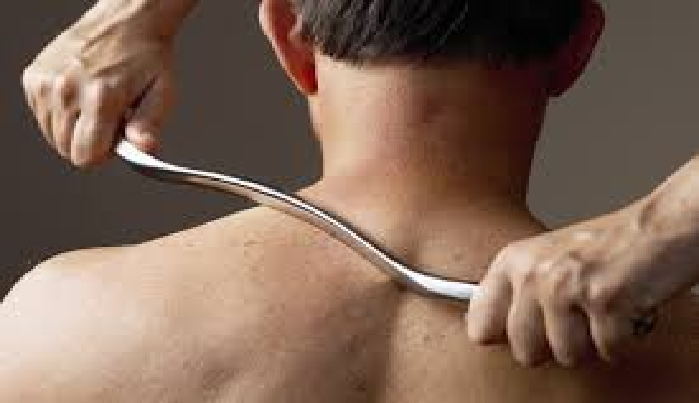
Graston treatment, also known as Graston Technique®, is a form of manual therapy that employs specialized stainless steel instruments to detect and treat soft tissue injuries. This innovative approach is widely used in physical therapy, chiropractic care, and sports medicine to address conditions involving muscle, fascia, and connective tissue dysfunction. Developed in the 1990s, Graston treatment has since gained recognition for its ability to facilitate recovery, improve mobility, and reduce pain in patients with various musculoskeletal issues.
Principles of Graston Treatment
At the core of the Graston Technique is the concept of instrument-assisted soft tissue mobilization (IASTM). The stainless steel instruments are specifically designed to glide over the skin, enabling practitioners to identify areas of restriction, scar tissue, or adhesions in the soft tissue. These adhesions often develop due to injury, overuse, or surgery and can lead to pain, stiffness, and limited range of motion.
The treatment process involves using the instruments to perform targeted strokes over the affected areas. The pressure applied helps break down scar tissue and adhesions, promoting blood flow and cellular activity that supports the body’s natural healing processes. This mechanical stimulation is thought to trigger fibroblast activity, which is crucial for collagen production and tissue repair.
Benefits of Graston Treatment
Graston treatment offers a range of benefits for individuals dealing with acute and chronic musculoskeletal conditions. Some of the primary advantages include:
- Enhanced Soft Tissue Healing: By breaking up scar tissue and improving circulation, Graston treatment accelerates the healing process in damaged tissues.
- Improved Range of Motion: Adhesions and scar tissue can limit mobility. Graston treatment helps restore flexibility and range of motion by addressing these restrictions.
- Reduced Pain: Many patients report significant pain relief following Graston treatment, as the technique alleviates pressure on sensitive areas and reduces inflammation.
- Non-Invasive Approach: Unlike surgical interventions, Graston treatment is a non-invasive option for managing soft tissue injuries, making it an attractive choice for patients seeking conservative care.
- Versatility: The technique is effective for a variety of conditions, from sports injuries and repetitive strain disorders to post-surgical recovery and chronic pain syndromes.
Common Conditions Treated with Graston Technique
Graston treatment is used to address a wide array of soft tissue disorders, including but not limited to:
- Tendinopathies: Conditions such as tennis elbow, golfer’s elbow, and Achilles tendinitis respond well to Graston treatment.
- Plantar Fasciitis: This common condition affecting the heel and bottom of the foot can be alleviated with Graston therapy.
- Carpal Tunnel Syndrome: By reducing scar tissue and improving mobility, the technique can ease symptoms associated with carpal tunnel syndrome.
- Rotator Cuff Injuries: Shoulder pain and stiffness caused by rotator cuff injuries are often treated effectively with Graston.
- Myofascial Pain Syndrome: The technique targets trigger points and adhesions that contribute to myofascial pain.
- Post-Surgical Scarring: Graston treatment helps minimize scar tissue buildup and improve mobility following surgery.
The Graston Treatment Process
A typical Graston treatment session begins with a thorough assessment by a trained practitioner to identify the affected areas and determine the appropriate treatment plan. Patients are often advised to warm up before the session, either through light exercise or heat application, to prepare the tissues for mobilization.
During the session, the practitioner applies a lubricant to the skin to reduce friction and ensure smooth instrument movement. They then use the instruments to perform specific strokes over the targeted areas. Patients may feel some discomfort during the procedure, especially if significant adhesions or scar tissue are present. However, this sensation is typically described as a “therapeutic discomfort” and subsides shortly after the treatment.
Post-treatment care often includes stretching, strengthening exercises, and hydration to enhance the therapy’s effectiveness. Patients may also experience mild redness or bruising in the treated areas, which is a normal response to the technique and usually resolves within a few days.
Evidence and Research
Numerous studies have investigated the efficacy of Graston treatment for various conditions. Research has shown that the technique can improve range of motion, reduce pain, and enhance functional outcomes in patients with soft tissue injuries. For instance, a 2017 study published in the Journal of Physical Therapy Science found that Graston Technique combined with exercise therapy significantly improved pain and function in patients with chronic low back pain.
Another study in the Journal of Manipulative and Physiological Therapeutics highlighted the technique’s benefits for individuals with plantar fasciitis, noting improvements in pain reduction and overall foot function. These findings support the growing body of evidence that Graston treatment is a valuable tool for managing musculoskeletal conditions.
Considerations and Precautions
While Graston treatment is generally safe and well-tolerated, it may not be suitable for everyone. Patients with certain conditions, such as open wounds, fractures, or active infections, should avoid this therapy. Additionally, individuals with blood clotting disorders or who are taking anticoagulant medications should consult their healthcare provider before undergoing Graston treatment.
It’s also essential to seek care from a certified Graston Technique practitioner. Proper training ensures that the therapy is performed safely and effectively, minimizing the risk of adverse effects.
Conclusion
Graston treatment is a highly effective and versatile approach to addressing soft tissue injuries and dysfunctions. By utilizing specialized instruments to detect and treat adhesions and scar tissue, the technique promotes healing, enhances mobility, and reduces pain. Whether used as a standalone therapy or in conjunction with other treatments, Graston Technique has become a valuable tool for healthcare professionals seeking to improve patient outcomes. As research continues to validate its benefits, this innovative method is likely to remain a cornerstone of modern musculoskeletal care.





Leave a Reply